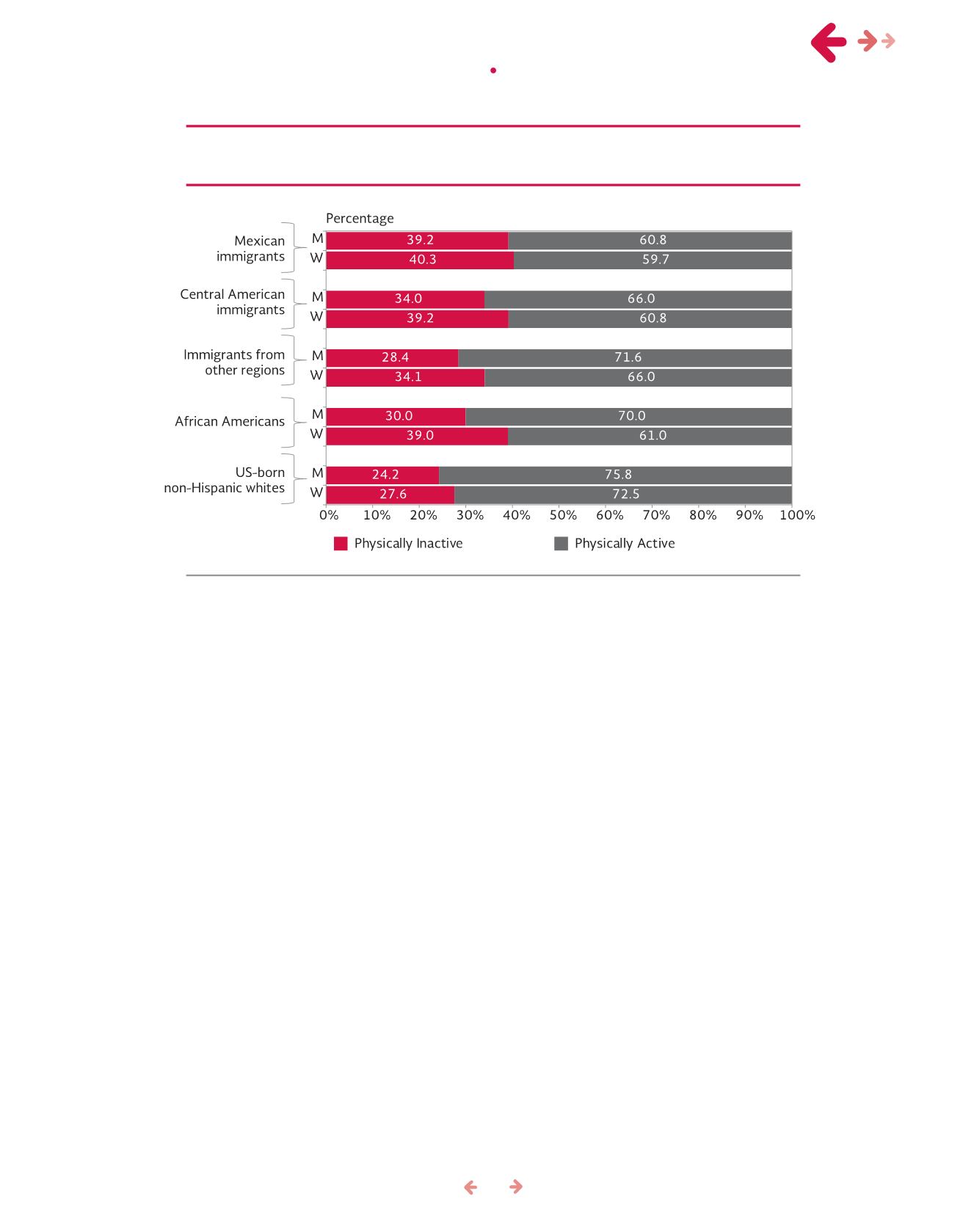
59
and complications in the respiratory system, chronic
obstructive pulmonary disease (copd) andmalignant
trachea, bronchus and lung tumors. Moreover, inwo-
men it is associated with complications during preg-
nancy and childbirth (Fiore
et al
., 2001).
Alcohol usehas increasedamong
Mexicans in recent years
OnaverageMexicanswhodrinkconsumemorealcohol
thanother groups per occasion (3.5drinks at a time).
Only theyandCentral Americans (whoseaveragecon-
sumptionof2.6drinks isequal to thatof non-Hispanic
US-born whites) recorded a slight increase between
2004-2005and2012-2013 (Figure44).
Among both Mexican immigrants and non-
Hispanic US-born whites, the amount of alcohol
consumed on each occasion decreased with age,
and consequently in 2012-2013, while young Mexi-
cans between 18 and 29 years had a little over four
drinks every time they consumed alcohol, adults
between 45 and 64 years had one drink less. A simi-
lar pattern emerged among non-Hispanic whites in
these age groups (Figure45). In addition, the average
number of drinks by younger Mexican immigrants
ages 18-29 years increased over the past 10 years
to just over four drinks at a time, while the averageof
drinks in the sameagegroupofUS-bornnon-Hispanic
whites decreased. Since binge drinking is defined as
five or more drinks on a single occasion for men, and
four drinks for women, this data suggests high levels
of dangerous binge drinking among the Mexican im-
migrant population that drinks alcohol.
Mexicans smoke fewer cigarettes
thanother groups
Thedatashowadownward trend insmokingover time
for all groups (Figure46). The smoking rate forMexi-
can immigrants (11%) is about half that of African-
Americans and non-Hispanic whites (20% and 19%
respectively). Only Central Americans have lower
Source: EstimatesbyCONAPO, basedon the
National Health InterviewSurvey
(NHIS), 2012-2013.
Figure43. Populationages18 to64 living in theUnitedStates, by level of physical
activityandgender, basedon regionof originandethnicityor race, 2012-2013
chapter i i i •
risk factors and health conditions


